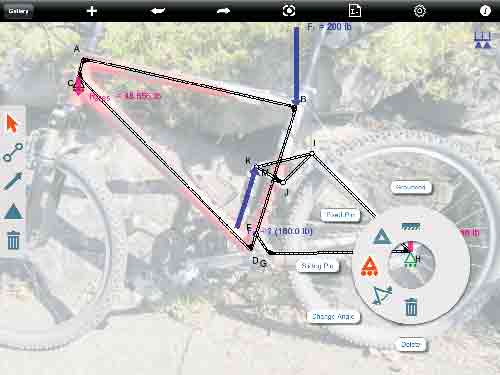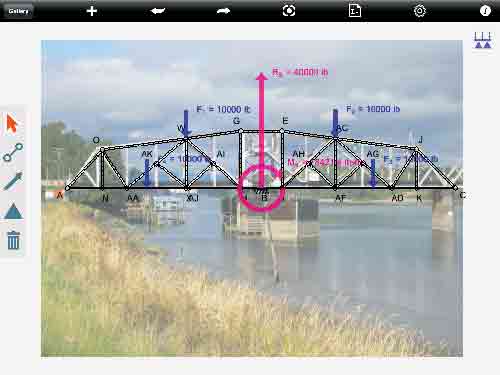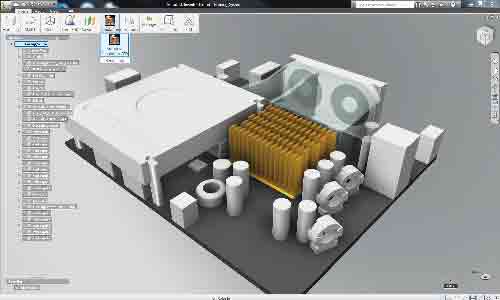Latest News
March 1, 2012
By Vince Adams
Based in San Rafael, CA, Autodesk has long been known as a CAD powerhouse. After some recent high-visibility acquisitions in the simulation domain—including Algor, Blue Ridge Numerics and Moldflow—Autodesk’s commitment to computer-aided engineering (CAE) became clear.
This alone isn’t remarkable. Most major CAD companies have integrated simulation solutions in different degrees through acquisition. It’s a familiar story, in fact: A CAD company purchases a finite element analysis (FEA) tool and offers a CAD-embedded version of the traditional analysis process.

Figure 1, above: Autodesk ForceEffect restraint options.
However, Autodesk wasn’t prepared to accept the status quo. Per Scott Reese, the company’s senior director of Simulation Solutions, after exhaustive research with customers and across the market, Autodesk chose a different approach that it expects to be a game changer.
Autodesk’s View of Simulation
Reese says that Autodesk believes the simulation market is bigger than the current industry offering can address. Conversations with customers helped it realize that every design and manufacturing company needs simulation. What’s driving development at Autodesk is that established paradigms won’t work with the diverse cultures, cost structures or engineering processes at non-traditional simulation users.
Autodesk recognized that previous investments and commitments to simulation—at Autodesk, its partners and its competitors—have not made simulation as prolific as industry gurus predicted it should be. Reese and Autodesk were convinced that a “one-size-fits-all” simulation tool would never succeed in these companies.
“They need the right simulation tool for each person in the process at the proper time,” Reese says.
Autodesk has responded to this view on market need with acquisitions, as mentioned previously, as well as investments in internal R&D and customer support for simulation. Reese estimates that Autodesk has invested more than $500 million on simulation in the last 4 to 5 years.
The strategy developed in San Rafael is built upon three key areas of development, each predicated on the mantra that “one size fits all” won’t succeed, and that companies need the right simulation for each person at the right time.
1. Mobile Simulation
Feedback from customers was that many engineers are being issued mobile computing devices such as the iPad to augment or even replace their laptops. Because this is an emerging technology, the full potential has yet to be understood—but Autodesk wants to remain ahead of the curve. Thus, its mobile computing strategy is in full swing. Its first simulation product for mobile devices is ForceEffect, an interactive free-body diagram calculator. It is currently available on iOS devices (see Figure 1).
ForceEffect offers freehand sketching of members with intuitive access to dimensioning. Autodesk has provided a full palette of loads and restraints, and reaction forces solve instantaneously as changes are made. Models can be saved in a gallery for later reuse (see Figure 2).

Figure 2, left: Autodesk ForceEffect calculations on bridge loading.
2. “Always-on” Simulation
Reese notes that design engineers want insight as early in the design process as possible on relative value of design alternatives, trending data and how much better/worse a change makes a design. Traditional simulation tools require these engineers to switch gears, both mentally and in their software interface, to pose a structured problem to a solver, then to interpret the results before returning to actual design activities.
Autodesk’s vision is to provide instant feedback on design choices without interrupting the workflow. Think of a GPS unit that automatically updates arrival time and route information based on driving decisions.
Autodesk’s Moldflow Adviser Design Plug-In is a CAD add-in for Autodesk Inventor, as well as competing products such as Pro/Engineer. This tool is always working in the background and recognizes when an engineer is working on a plastic part. It begins to offer immediate input on mold filling, feature placement, draft, manufacturability and cost-effectiveness utilizing on-screen gages. The color and fill level of each gage indicates the status of various manufacturability parameters, and can be queried when a problem is noted.
First developed for the Alias platform, Project Falcon provides quick feedback on air flow-related phenomena such as drag. It provides insight on trends and design direction. All simulation is local (vs. cloud) and uses STL files for geometry input. Once a concept is fleshed out, a user might choose to refine details in a full-featured computational-fluid dynamics (CFD) code like Autodesk CFDesign.
3. Cloud Computing
More rigorous simulation users are still burdened by long run times, resource/CPU bottlenecks, and the need to iterate in designs that haven’t been fully fleshed out.
Autodesk is counting on the cloud to make simulation more accessible. Moldflow Insight WS (Web Service) is a pay-as you go simulation experience that performs all computations and post-processing remotely. Going back to Autodesk’s belief that all companies need simulation, but on their terms, this allows companies with infrequent needs that can’t justify a deep investment to access simulation only when required. WS customers receive full access to reports, screen shots and animations to make design decisions.

Figure 3: Autodesk SimCFD in Autodesk Fusion.
SIM Squad
With the acquisition of Moldflow, Algor, CFDesign and others, Autodesk found itself with a team of hundreds of simulation experts that had both those factors with their established user base and more than 1,000 man-years of diverse simulation experience. This resource was forged into a cohesive, cross-functional group and dubbed the SIM Squad. This team acts as the “public face” of Autodesk Simulation. They appear at trade shows, user conferences and web events. They publish articles, technical papers, training and best practices documents, as well as offering and e-support for both Autodesk customers and prospects.
Autodesk says it is focusing on tools that fit within the engineering workflow. This allows designers to focus on design, not simulation. In the past, companies hoped simulation would ensure that only viable designs would go to test. Autodesk is expanding this vision to ensure that only viable designs will make it to more rigorous and costly simulation.
Vince Adams, currently an account manager for LMS, is a longtime simulation educator, consultant and speaker. He has authored three books on finite element analysis and numerous magazine articles. Contact him via [email protected].
MORE INFO
Subscribe to our FREE magazine, FREE email newsletters or both!
Latest News
About the Author
DE’s editors contribute news and new product announcements to Digital Engineering.
Press releases may be sent to them via [email protected].






